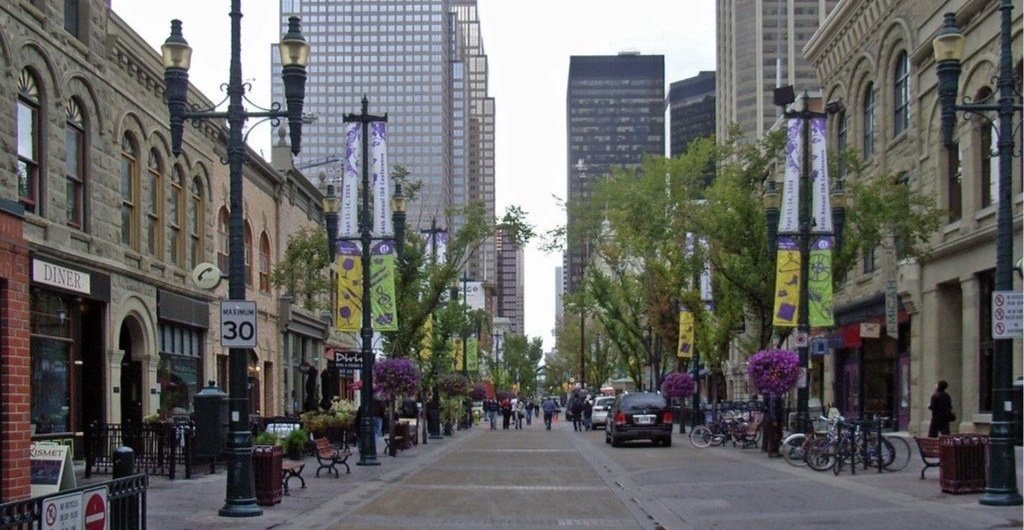
Car-dependent infrastructure is bad for businesses.
Walkability is proven to increase economic prosperity.
Urban Revival in America
Starting in the early 1990s, and especially gaining momentum in the 2000s and 2010s, Americans have been not only preferentially moving to cities, but living in dense, walkable environments. This phenomenon has been termed the Urban Revival, reversing the long-held trend of wealthy people escaping to the suburbs. While cities are regarded as expensive, this is actually due to a lack of city housing: almost 70% of American homes are single-family houses, even though more than half of Americans would prefer to live in multi-family housing – and 80% would be willing to pay more – if it means they could live in a walkable area. Thus, a shortage of dense urban housing has driven up prices.
The move towards urban walkable living has largely driven by “featureful cities” or the “Resort model” of cities: places with more walkable amenities – nearby coffee shops, grocery stores, neighborhood bars, and other entertainment options – have higher land value and disproportionately higher economic output. In contrast, even though housing may be cheaper in car-dependent places, living there is not: the extremely high cost of automobile ownership actually makes traditionally more expensive but walkable cities more affordable than places with less transit, leaving residents with more disposable income by allowing them to live car-free.
Car-dependent infrastructure promotes big chains and harms local businesses
An exhaustive analysis by the Washington Post found that places with more drivers have significantly more national chains and fewer independent local restaurants, a phenomenon termed “McCities”. This makes sense; when you’re flying by at 70kph on a road separated from the business by a parking moat, there’s no chance to window shop a new or unfamiliar business, making people more likely to rely on familiar experiences and branding. This is problematic, however, because chain restaurants sap money from local economies, whereas shopping locally provides significant community benefits.
Additionally, urban sprawl and ‘chaininess’ lead to a loss of distinctive community identity, which negatively impacts tourism and growth. In fact, experiencing local culture is a growing segment of tourism, and robust public transit is the most important factor in developing a successful tourism economy and better preserves cultural distinctiveness. These benefits are not just for big cities; rural small businesses also experience more prosperity when located in walkable areas, and sustainable public transit improves rural tourism.
In effect, car dependency harms the economy, whereas strong multimodal transportation benefits local businesses. Quoting directly from the scientific literature: “Both economic theory and empirical evidence indicates that excessive automobile dependency reduces economic development“.
Walkable and transit-accessible infrastructure makes for prosperous businesses
In one joke, Jim Matthews of the Rail Passengers Association notes that “trains don’t carry people, they carry wallets.” Due to increasing preferences for walkability and since active transportation users spend less to travel because they’re not paying for expensive cars, the area within a 500 meter walkshed of rail transit stations become thriving urban centers that benefit the local economy. Having quality transit to your community guarantees people will stop by and spend money.
In another joke, it’s noted that you always know where a train went “because it left tracks.” While often critiqued that trains can’t easily swerve around a poorly-parked car, it is that very permanence that leads to more business and higher property values in the vicinity of rail transit. A train track signifies a permanent commitment to carry potential customers on that route, but a fickle bus can be diverted with as little effort as placing a tarp over the sign. Additionally, train-vehicle conflicts can be reduced with proper street or grade crossing design, commuters significantly prefer traveling by rail than bus, and fixed routes provide more stable, predictable development potential. As a result, investment in transit causes increased sales for nearby businesses, and Transit-Oriented Development allows businesses to capture the value of active transportation savings in the vicinity of stations. Unfortunately, business owners often oppose sustainable transportation out of perceived self-interest because they routinely overestimate the percentage of customers who visit using active transportation.
However, the data are clear: active transportation users outspend car drivers, multimodal investment grows the economy more, public transportation creates more and better jobs than roads, and XXXXXXXXX. An analysis of similar DMU project (the RiverLine in New Jersey, upon which the CCHR plan is modeled) found that, after the project was constructed, 80% of new jobs and 50% of new tax revenue were directly attributable to rail transit.


